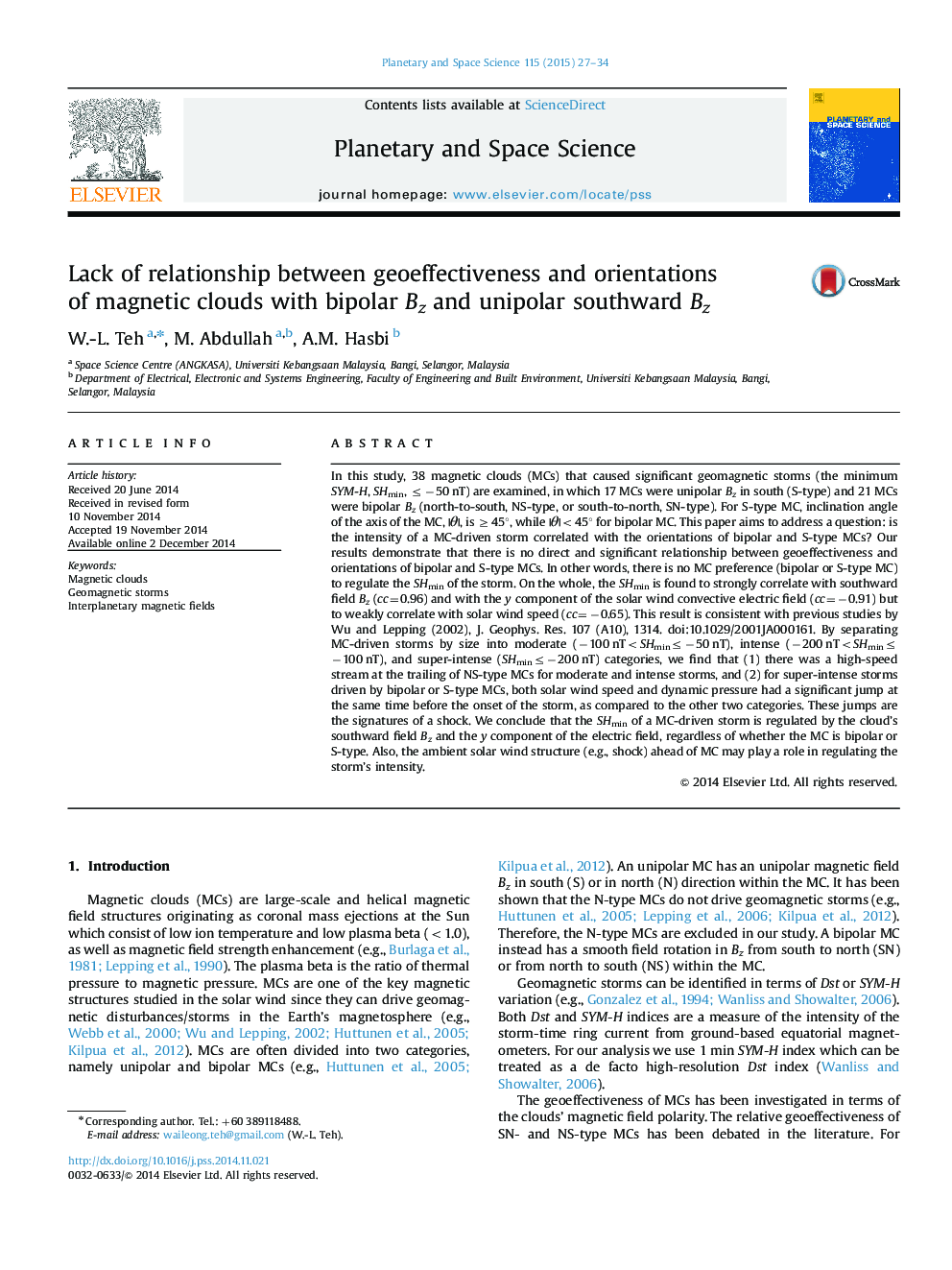| Article ID | Journal | Published Year | Pages | File Type |
|---|---|---|---|---|
| 1780933 | Planetary and Space Science | 2015 | 8 Pages |
Abstract
In this study, 38 magnetic clouds (MCs) that caused significant geomagnetic storms (the minimum SYM-H, SHmin, â¤â50 nT) are examined, in which 17 MCs were unipolar Bz in south (S-type) and 21 MCs were bipolar Bz (north-to-south, NS-type, or south-to-north, SN-type). For S-type MC, inclination angle of the axis of the MC, |θ|, is â¥45°, while |θ|<45° for bipolar MC. This paper aims to address a question: is the intensity of a MC-driven storm correlated with the orientations of bipolar and S-type MCs? Our results demonstrate that there is no direct and significant relationship between geoeffectiveness and orientations of bipolar and S-type MCs. In other words, there is no MC preference (bipolar or S-type MC) to regulate the SHmin of the storm. On the whole, the SHmin is found to strongly correlate with southward field Bz (cc=0.96) and with the y component of the solar wind convective electric field (cc=â0.91) but to weakly correlate with solar wind speed (cc=â0.65). This result is consistent with previous studies by Wu and Lepping (2002), J. Geophys. Res. 107 (A10), 1314. doi:10.1029/2001JA000161. By separating MC-driven storms by size into moderate (â100 nT
Related Topics
Physical Sciences and Engineering
Earth and Planetary Sciences
Geophysics
Authors
W.-L. Teh, M. Abdullah, A.M. Hasbi,
